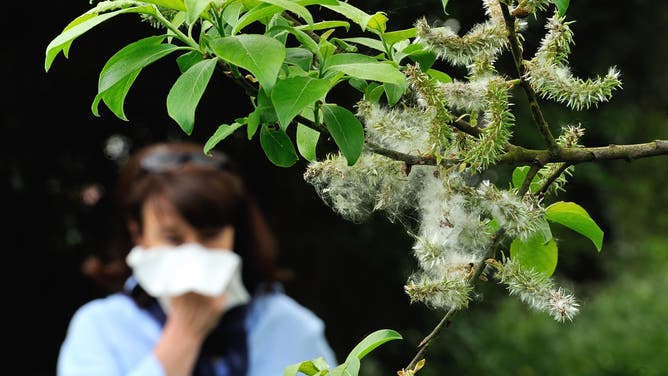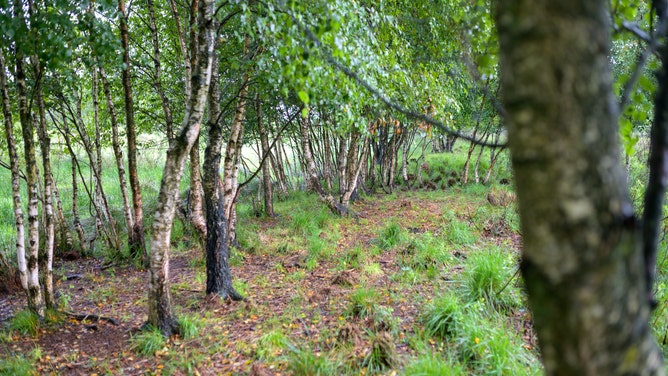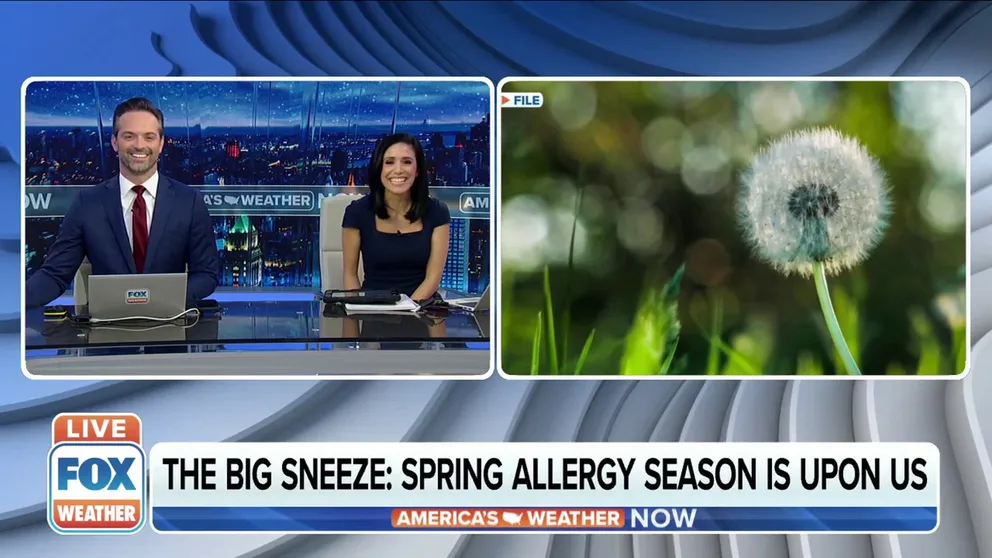Even more sniffling and sneezing: Longer allergy season possible due to climate change, study suggests
More studies are needed to determine the future severity of allergy season.
Allergy Season is here
FOX Weather talked to Dr. John James, allergy and immunology specialist, about allergy season.
The seasonal sniffling and sneezing could last longer for allergy sufferers. A recent study published in the journal Nature Communications suggested that climate change will lengthen allergy season.
Two scientists from the University of Michigan examined climate data and pollen data and found that pollen emissions later this century would likely start 10-40 days earlier in the spring and end up to 19 days later in the fall.

Ragweed
(Photo by Patrick Pleul/picture alliance via Getty Images / Getty Images)
According to the study, up to 30% of the world suffers from pollen-induced respiratory issues. Authors Allison Steiner, climate and space professor at the University of Michigan, and grad student Yingxiao Zhang wrote, "(It) is a worldwide health concern resulting in economic loss because of medical expenditures, missed work, and school days, and early death."
Allergy season is already longer
Temperatures drive the start date, peak emission date and end date of pollination. The scientists studied the last 30+ years of pollen data and determined that pollen seasons have already started 20 days earlier and lasted eight days longer in recent decades. Total pollen emissions increased by 46% and plants produced 42% more pollen during peak pollen emissions.

(Photo by PHILIPPE HUGUEN/AFP via Getty Images) / Getty Images)
"Climate change has played a role over the past couple of years," Dr. John James, an allergy and immunology specialist, said during an interview with FOX Weather. "We're seeing that climate change can impact allergy seasons in terms of causing longer allergy seasons, more pollen and possibly even more robust pollen in the air."
HERE ARE THE 10 ‘ALLERGY CAPITALS’ OF AMERICA IN 2022
According to the study, a modeling simulation showed annual total pollen emissions increased by 16-40% by the end of the century.
The climate forecast model used in the study estimated a 5-degree Fahrenheit average temperature rise by 2081-2100 (compared to 1995-2014 temperatures). The study then simulated the start and end dates of pollen emissions of the 15 most prevalent wind-pollinated flowering plants. You may recognize the names of these plants as: grasses, ragweed, conifer, maple, elm, alder, birch, mulberry, poplar, ash and oak.

A stand of brich.
(Photo by Jonas Walzberg/picture alliance via Getty Images / Getty Images)
According to the U.S. Forest Service these types of plants release billions of grains of pollen into the air because only a fraction of the grains will hit their target.
Uncertainties
The conclusion of the study does note many uncertainties, the primary one being changes in levels of carbon dioxide in the atmosphere. Lab tests cited in the study did show that doubling CO2 concentrations (plants convert the gas, water and sunlight into food) increased pollen production by 60-1,300% and increased the amount of pollen protein per grain.
"While these conditions may not occur naturally, scientists feel that higher CO2 levels may intensify pollen production and the severity of pollen allergic disease," the study read.

About 30% of the world suffers through seasonal allergies.
(Photo by Anne Levenston/Toronto Star via Getty Images / Getty Images)
Ask the doc: What can I do about my allergies now?
James offered the following advice to allergy sufferers looking to manage their symptoms.
- "First… there's something called nasal saline washes which can be very effective," said James. "It's in a spray bottle. You spray it in the nose to wash out allergens and irritants.
- "The most effective medication topical nasal steroids," continued James for the next step. "These are sprayed once a day away from the nasal septum and treat … the inflammation in the nose.
- "The next medications are antihistamines. These can be like Zyrtec Allegra Claritin," said James. "We don't recommend people use over-the-counter Benadryl, but because that can cause drowsiness and affect driving and focusing on tasks."
- "And finally, allergy shots or allergen immunotherapy is a very effective treatment for people with allergies," he said. "And this is more of a long term therapy that can bring about desensitization and bring about tolerance to the allergens over time."
James said tree pollen season runs from February to May. Grass pollen season runs from late May to July. Weed pollen season starts in August and continues until the first freeze, which usually happens in October or November for much of the U.S.
